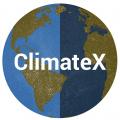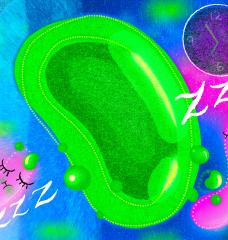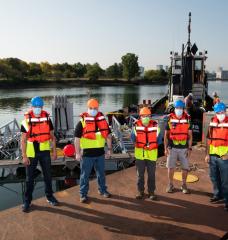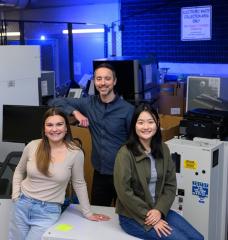Description
This week, Rajesh and Laura discuss the pervasiveness of plastic and which countries contribute the most plastic to the world's oceans. The two also talk over some recent natural events happening in Siberia.
If you’re enjoying our Climate Conversations podcast, you can subscribe on your favorite podcast platform to hear the latest episodes first. Find us on:
Transcript
[00:00:00:17] RAJESH KASTURIRANGAN: This is Climate Conversations, a podcast by ClimateX, the online community building a movement to solve our climate crisis.
[00:00:08:15] [MUSIC PLAYING]
[00:00:17:12] Welcome to Climate Conversations. I'm Rajesh Kasturirangan, and I'm joined by Laura Howells.
[00:00:21:22] LAURA HOWELLS: Hi, Rajesh. How are you?
[00:00:23:11] RAJESH KASTURIRANGAN: I'm pretty good.
[00:00:24:03] LAURA HOWELLS: Good, good.
[00:00:26:01] RAJESH KASTURIRANGAN: Knee-deep in plastic bags. What do you think?
[00:00:30:28] LAURA HOWELLS: Yeah, I was reading an article on BBC News recently, saying that we produce so much waste plastic every year that it fills something like 34 times Manhattan Island, up to kind of ankle-deep plastic, which is a visualization that really grabbed my attention. It's hard to imagine or quantify quite so much plastic. But what can we do about it?
[00:00:53:06] RAJESH KASTURIRANGAN: Yeah, and plastic finds its ways in so many things, in the Pacific Ocean, in the stomachs of cows. And I have to tell you that when plastics first came out in India, when I was a kid, they were so rare that I used to hoard plastic bags.
[00:01:11:13] LAURA HOWELLS: Really?
[00:01:12:04] RAJESH KASTURIRANGAN: Yep.
[00:01:12:21] LAURA HOWELLS: Gosh. I mean, like--
[00:01:13:13] RAJESH KASTURIRANGAN: In fact, my grandmother never threw away a plastic bag, ever.
[00:01:17:13] LAURA HOWELLS: Amazing. I mean, my parents, they're really into recycling. And so there's a cupboard in our house somewhere that is chockablock full of plastic bags that then they put in the boot of their car and they take to the supermarket, and they use it every single week. So they're so committed to it.
[00:01:33:14] And I think it's great, but I mean, I remember backpacking around Thailand when I was a teenager. And there were plastic bottles washing up on these beautiful beaches that 20 years ago would have been so pristine.
[00:01:43:14] RAJESH KASTURIRANGAN: Indeed.
[00:01:44:22] LAURA HOWELLS: But I mean, the question is, what can we do about it? Like, I know that I've seen some interesting innovations recently about people trying to get rid of plastic bottles and instead, creating these-- I don't know how to explain it, like bubbles, almost, to hold water within them. And they're looking to turn that into an innovation that makes its way into supermarkets.
[00:02:01:23] RAJESH KASTURIRANGAN: Yeah. I mean, there have been many-- so certainly in India, people use earthenware. So instead of using plastic, use a biodegradable material, clay.
[00:02:12:05] LAURA HOWELLS: Oh yeah, fantastic.
[00:02:13:24] RAJESH KASTURIRANGAN: Yeah, especially for hot things, not for cold stuff.
[00:02:16:12] LAURA HOWELLS: No.
[00:02:17:06] RAJESH KASTURIRANGAN: So yeah.
[00:02:18:11] LAURA HOWELLS: And I know in the UK-- I can't remember if it was this year or last year now, but they introduced a plastic bag tax. So if you go to any shop or supermarket and you want to use a plastic bag, you're being charged like 5p, 10p, or something like that, to try and discourage people from using it. I don't know how effective it is. Yeah, I guess that hopefully, there will be some data from that soon. But--
[00:02:37:06] RAJESH KASTURIRANGAN: Actually, I think in Cambridge and some of the other towns in this area, plastic bags have been essentially banned. And even paper bags, you now have to pay for them.
[00:02:47:21] LAURA HOWELLS: Oh, interesting. I think that's a great way of tackling it.
[00:02:49:18] RAJESH KASTURIRANGAN: Yes, $0.10.
[00:02:51:01] LAURA HOWELLS: Nice.
[00:02:52:02] RAJESH KASTURIRANGAN: Yes, and I think that it has-- I know by talking to people at Trader Joe's, it has reduced their paper bag usage by quite a bit.
[00:02:59:24] LAURA HOWELLS: Fantastic. I was in Boston Logan the other day. And what I really like about a lot of American airports is when you have to get rid of your water going through security, you can just dump out the water and keep the empty bottle. Whereas a lot of other international airports I travel to, you have to throw away your bottle and buy another one on the other side, which I absolutely hate, because what an absolute waste.
[00:03:19:20] RAJESH KASTURIRANGAN: We've had some fantastic posts on plastic on ClimateX. So there are these new ideas that are essentially about fishing for plastic, right, which I kind of like because I don't like fishing for fish. So fishing for plastic, I'm totally fine with.
[00:03:37:23] LAURA HOWELLS: And so what's the aim then? You fish for plastic, and what do you do with it?
[00:03:40:25] RAJESH KASTURIRANGAN: I mean, I'm assuming that it will either be recycled or go into a landfill. But I actually-- I should find out more about exactly how that plastic is going to be used or reused.
[00:03:55:00] LAURA HOWELLS: Yeah, so it's an exciting idea. What not concern me but what popped into my mind is, how can this be done on a scale? Like, I would love to see some kind of innovation or model that allows us to maybe fish for plastic or gain plastic from the ocean in a way that can be done en masse. Because in my head, I'm picturing a couple of guys sitting around with fish lines on the river. But I would love to see how that can be done on scale.
[00:04:21:06] RAJESH KASTURIRANGAN: I think the idea as a scalable hypothesis is you have these massive lines, just like deep sea fishing where you're essentially lining an entire sector of the ocean. What I found interesting about this article is that people are tracking plastic just like they track fish. So you are using these ocean patterns to see where the plastic is clustered so that you essentially go after the-- I want to say low-hanging plastic.
[00:04:53:08] LAURA HOWELLS: [LAUGHS]
[00:04:54:29] RAJESH KASTURIRANGAN: Right?
[00:04:55:16] LAURA HOWELLS: I mean, it's great to get rid of what we've already got, but what stands out to me is is it ever going to make a difference unless we stop producing so much plastic and adding to it.
[00:05:05:17] RAJESH KASTURIRANGAN: I think I agree. I agree that it's a short-term effort to gather the plastic that's already there, but I think the long-term solution is not to release it in the first place.
[00:05:16:10] LAURA HOWELLS: And what's interesting to me is that there are five countries responsible for something like 60-odd% of the waste plastic in our environment.
[00:05:25:03] RAJESH KASTURIRANGAN: All right, tell us who the offenders are.
[00:05:26:18] LAURA HOWELLS: OK, you ready?
[00:05:27:17] RAJESH KASTURIRANGAN: Yes.
[00:05:28:10] LAURA HOWELLS: So the biggest offenders, China. I'll tell you what? There's four left. Can you guess what they are?
[00:05:36:13] RAJESH KASTURIRANGAN: Hm, let me think. The United States?
[00:05:39:12] LAURA HOWELLS: No.
[00:05:39:29] RAJESH KASTURIRANGAN: Wow!
[00:05:40:16] LAURA HOWELLS: Yeah, would you believe it? I think this whole list is going to really surprise you.
[00:05:44:16] RAJESH KASTURIRANGAN: Are these the five biggest producers?
[00:05:47:18] LAURA HOWELLS: This is the waste that comes from these five countries, so the five biggest waste producers. So--
[00:05:53:19] RAJESH KASTURIRANGAN: Plastic waste producers.
[00:05:54:20] LAURA HOWELLS: Mhm.
[00:05:55:12] RAJESH KASTURIRANGAN: India.
[00:05:55:29] LAURA HOWELLS: No.
[00:05:56:18] RAJESH KASTURIRANGAN: What? OK. So China--
[00:05:59:18] LAURA HOWELLS: Yes.
[00:06:00:18] RAJESH KASTURIRANGAN: --which you've already mentioned. Russia.
[00:06:02:11] LAURA HOWELLS: No.
[00:06:03:25] RAJESH KASTURIRANGAN: Oh my goodness. This is getting to be an interesting-- give me a clue.
[00:06:09:14] LAURA HOWELLS: OK, I'll give you a clue. Think Southeast Asia.
[00:06:13:07] RAJESH KASTURIRANGAN: Southeast-- Vietnam.
[00:06:14:27] LAURA HOWELLS: Yes. And I'd say, keep thinking along the same lines of Southeast Asia.
[00:06:19:03] RAJESH KASTURIRANGAN: Indonesia.
[00:06:20:05] LAURA HOWELLS: Yes.
[00:06:21:25] RAJESH KASTURIRANGAN: So that's three out of five.
[00:06:23:09] LAURA HOWELLS: Mhm.
[00:06:24:14] RAJESH KASTURIRANGAN: More Southeast Asia?
[00:06:25:14] LAURA HOWELLS: More Southeast Asia, yeah.
[00:06:26:24] RAJESH KASTURIRANGAN: Thailand.
[00:06:27:15] LAURA HOWELLS: Yes.
[00:06:28:25] RAJESH KASTURIRANGAN: OK.
[00:06:29:18] LAURA HOWELLS: You've got one left.
[00:06:30:15] RAJESH KASTURIRANGAN: And even more Southeast Asia. I guess that's where it happens. If it is Vietnam, Laos?
[00:06:40:29] LAURA HOWELLS: No.
[00:06:42:02] RAJESH KASTURIRANGAN: That's too small. So what might even-- Burma?
[00:06:47:06] LAURA HOWELLS: Not Burma. Do you want me to give it away, the last one?
[00:06:49:12] RAJESH KASTURIRANGAN: Go for it.
[00:06:50:00] LAURA HOWELLS: Philippines is the last place, yeah.
[00:06:51:01] RAJESH KASTURIRANGAN: The Philippines. So these must be the-- wow, this is where I'm guessing the production happens.
[00:07:00:27] LAURA HOWELLS: I guess so. So if these five countries, if they reduced their plastic leakage by 65%, it would reduce global waste by 45%. So they make up a massive amount of our plastic.
[00:07:14:29] RAJESH KASTURIRANGAN: All right, I guess the lesson for the day is Southeast Asia.
[00:07:20:25] LAURA HOWELLS: It's very rare, isn't it, that you find a list like this and you're not-- because I automatically go, US, some big players in Europe. It's very, very strange to think that they're responsible, but yeah, I wonder why it is. Maybe it's the production.
[00:07:33:01] So the article that I grabbed that from is Fast Company. And yeah, I thought that was really interesting. I'll add that link into the More Info section of this podcast.
[00:07:41:17] RAJESH KASTURIRANGAN: I like Fast Company, yeah.
[00:07:43:01] LAURA HOWELLS: Good, yeah, yeah, yeah. Maybe we need to make this a little feature every now and then. We'll do some guessing work on the worst different [? pollutants ?] for all these different areas.
[00:07:50:27] RAJESH KASTURIRANGAN: Yeah. So plastic, plastic everywhere, but I think there are a few places where, and fewer every day, where there's no plastic. But even those places seem to be having troubles.
[00:08:04:24] LAURA HOWELLS: Yeah, so I was chatting with my husband at the weekend, having a little look at some photos on BBC News of the massive sinkholes in Siberia, which I'm assuming is a place that's probably not going to be touched by too much plastic.
[00:08:19:24] RAJESH KASTURIRANGAN: Siberia.
[00:08:20:26] LAURA HOWELLS: Yeah.
[00:08:21:16] RAJESH KASTURIRANGAN: Gulag Archipelago. I mean, I feel like whenever I think of Siberia, I think of one or two things. One is cold places--
[00:08:29:29] LAURA HOWELLS: Cold.
[00:08:31:02] RAJESH KASTURIRANGAN: Yes. We do not think of Siberia-- oh, you never know. There might be summer vacations in Siberia in a few decades.
[00:08:39:09] LAURA HOWELLS: No thank you.
[00:08:42:01] RAJESH KASTURIRANGAN: But the two things that come to my mind are-- one is romantic, and one is not. The romantic thing is I always wanted to take the train across the Siberian railroad, the nine days. In fact, my friend [? Grisha ?] and I wanted to do that. We had wanted to take the Trans-Siberian Railroad from now St. Petersburg to Vladivostok.
[00:09:08:05] LAURA HOWELLS: Right. OK, so that's your romantic thought that comes to mind with Siberia. What's your less romantic thought?
[00:09:13:22] RAJESH KASTURIRANGAN: Being exiled--
[00:09:14:22] LAURA HOWELLS: Mm, yeah,
[00:09:15:18] RAJESH KASTURIRANGAN: --where I use the term "exile" in a very euphemistic way, as in hard labor.
[00:09:22:16] LAURA HOWELLS: Yeah, I think "exiled" is a very polite way of putting it.
[00:09:25:28] RAJESH KASTURIRANGAN: And I think that in between the two-- of course, I mean, it's such a huge peninsula.
[00:09:33:06] LAURA HOWELLS: Massive, yeah.
[00:09:33:28] RAJESH KASTURIRANGAN: Massive. We know so little, except that every once in a while, something happens that everybody wants to find out about, right? Like I remember reading about the Tunguska explosion in 1908 where something exploded. UFO types think it was Roswell before it became Roswell.
[00:09:54:18] LAURA HOWELLS: Nice.
[00:09:55:02] RAJESH KASTURIRANGAN: But I think that the scientist types would want to spoil the party. I think it was something-- a rock from outer space that landed in the best possible spot, pretty much.
[00:10:06:06] LAURA HOWELLS: Yeah, I was going to say, there are very few places more sparsely populated than Siberia.
[00:10:12:25] RAJESH KASTURIRANGAN: But these days, Siberia is-- there's a bubble bursting. Let's put it that way.
[00:10:17:27] LAURA HOWELLS: It's been in the news quite a bit recently.
[00:10:19:26] RAJESH KASTURIRANGAN: Yeah.
[00:10:20:27] LAURA HOWELLS: I think the article I read about it this week was calling it "the gateway to hell," something like that.
[00:10:25:19] RAJESH KASTURIRANGAN: Yeah, I was thinking champagne, but at a very large scale, right? Imagine you are an Inuit. You are a native Siberian. And suddenly, a bubble bursts underneath you. And I mean, there's a 70-meter hole in the earth. What do you do?
[00:10:45:25] LAURA HOWELLS: I mean, it's insane. I couldn't even picture it. Until I saw some of the images online, I couldn't quite imagine how massive they were. But it looks almost like they never end, and they're deep and so black. And it's quite a terrifying thing to behold. So if I was an Inuit and I was suddenly affronted by that, I don't know what I'd do. Run, very far.
[00:11:08:08] RAJESH KASTURIRANGAN: And it releases methane, which is a lot worse than carbon dioxide.
[00:11:12:22] LAURA HOWELLS: And I'm assuming these sinkholes are big enough that the change in methane is going to be measurable and impactful, right?
[00:11:21:15] RAJESH KASTURIRANGAN: I mean, the individual-- these large bubbles, perhaps not. I don't know. I'm not a scientist, or I'm not a climate scientist. But nevertheless, it tells you that there is-- so from what I've read, there's more methane trapped, and therefore, more carbon trapped, in these tundra permafrost than there is carbon in the atmosphere right now.
[00:11:44:07] LAURA HOWELLS: And that's a really terrifying thought that I really don't want to have to think about tonight.
[00:11:48:06] RAJESH KASTURIRANGAN: Right? So if all of that gets released, then yeah, then all bets are off.
[00:11:54:22] LAURA HOWELLS: We're screwed. It's all over.
[00:11:56:27] RAJESH KASTURIRANGAN: Exactly.
[00:11:57:17] LAURA HOWELLS: I mean, the problem is, like you say, Siberia is so vast. It's not like you can plan for it, prepare for it, do anything about it. This landscape is unmanageable in its size, in its coldness. You know, if this keeps happening, if we continue to have these bubbles bursting and this methane release, what happens? What happens to our ozone layer?
[00:12:24:01] RAJESH KASTURIRANGAN: I would have to call my favorite climate scientist to answer that question. But my sense is we can't do anything about it. If it is indeed, if it's at that-- I think what we are all hoping is it doesn't happen at that kind of rate that there's absolutely no controlling it whatsoever.
[00:12:45:17] LAURA HOWELLS: Right, but I guess it puts more pressure on us, from our side of things, from the human side of things, to go, there are going to be natural events in the environment that we can do absolutely nothing about. And so reducing our own emissions and doing the things that we know we have some control over, that's the only way we can mitigate some of these massive risks.
[00:13:04:26] RAJESH KASTURIRANGAN: I would hope so. And I also think, on the flip side, if it does start accelerating-- I mean, I don't know when we'll find out. But if it happens, and then-- I can also imagine very sort of extreme measures that would have to be taken in response to it.
[00:13:20:01] LAURA HOWELLS: Right. It's like Yellowstone. My dad and I were discussing Yellowstone the other day. And it's kind of, if it happens, it happens. And there's kind of nothing you can do about it. It's so humongous. Its scale is so vast that literally, if there were to be some kind of eruption and activity, there's nothing that the North American continent can do anything about.
[00:13:39:03] RAJESH KASTURIRANGAN: So which makes me think of kind of a strange contradiction, which is, on the one hand, we think of climate change as something human-caused. We call it the Anthropocene, like when humans cause so much change that they are a geological force. But at the same time, once the train leaves the station, humans are no longer in control.
[00:14:02:22] LAURA HOWELLS: Yeah, absolutely.
[00:14:03:11] RAJESH KASTURIRANGAN: So it is the anti-Anthropocene once the Antropocene is over. So it feels like we got this small window where we feel like we are ruling the earth.
[00:14:13:02] LAURA HOWELLS: So powerful, yeah.
[00:14:14:10] RAJESH KASTURIRANGAN: And then, boom.
[00:14:16:00] LAURA HOWELLS: Well, it'll take one massive environmental disaster to really put us in our place, I think, and show us that we can be the most technologically advanced nation, place, species, and yet, a single event could wipe us out. That's it. It's all over.
[00:14:35:03] RAJESH KASTURIRANGAN: I remember reading Arthur C. Clarke's The City and the Stars. If you haven't read it, you should.
[00:14:40:03] LAURA HOWELLS: OK. Yeah, I'll get on that.
[00:14:41:29] RAJESH KASTURIRANGAN: And there's this little phrase in it which has always struck me. So most of the action happens hundreds of millions of years after what's being described, but it seems humans were very, very technologically advanced. They went to the stars, and they saw something that was so much more powerful than them that they then came back and said, we got to go back to the drawing table, right, and we need to fix ourselves. And the lesson was the stars are not for man.
[00:15:15:07] And unfortunately, it looks like it's not clear if Earth is for man either.
[00:15:20:14] LAURA HOWELLS: No, yeah, we're not doing a very good job of it, are we?
[00:15:22:24] RAJESH KASTURIRANGAN: Yeah. And so I want to think about Siberia because Siberia, the vastness of Siberia is still one of those places which is sort of not human.
[00:15:33:17] LAURA HOWELLS: Yeah, it's kind of defeated us.
[00:15:35:13] RAJESH KASTURIRANGAN: Yeah. And we need to pay some attention to that.
[00:15:39:07] LAURA HOWELLS: Absolutely. I mean, I can't even imagine the difficulty that governments and people are going to face in trying to access that landscape and do something about it, even just measure it.
[00:15:48:13] RAJESH KASTURIRANGAN: Make Siberia great again.
[00:15:50:10] LAURA HOWELLS: [LAUGHS]
[00:15:53:09] RAJESH KASTURIRANGAN: Well, it looks like we're coming to the end of our episode. And it's time for our burning question.
[00:15:58:00] LAURA HOWELLS: Go on, then. What's the burning question this week, Rajesh?
[00:16:00:08] RAJESH KASTURIRANGAN: Since we've been talking about plastic, what are your top five ideas of getting rid of all the plastic that we have on this planet?
[00:16:10:03] LAURA HOWELLS: Ooh, I like that. OK, so what we need is some good solutions, the best ways of getting rid of that plastic, or maybe reducing the plastic we're using so that there's less waste plastic.
[00:16:19:17] RAJESH KASTURIRANGAN: Yup, reduce, replace, reuse, however.
[00:16:23:13] LAURA HOWELLS: OK. So a shoutout to all of our members and listeners. We would love for you to get in touch with us and tell us how you think the best solutions can approach getting rid of waste plastic. As always, you can get in touch with us either on the ClimateX site, which is climatex.mit.edu. Rajesh and I are both members on the site.
[00:16:40:20] RAJESH KASTURIRANGAN: You can follow us there too.
[00:16:41:26] LAURA HOWELLS: Mhm. We're on Facebook and Twitter. You can just search for us. And if you want to get in touch with us directly and pose a question for us, ask a question, maybe suggest a guest, you can email us at climatex_feedback@mit.edu, and we'll get back to you.
[00:16:56:13] RAJESH KASTURIRANGAN: And we look forward to hearing what you have to say.
[00:16:58:07] LAURA HOWELLS: Yeah, definitely. Great talking to you, Rajesh.
[00:17:00:17] RAJESH KASTURIRANGAN: Bye, Laura.
[00:17:01:08] LAURA HOWELLS: See you.
[00:17:03:07] RAJESH KASTURIRANGAN: Climate Conversations is brought to you by MIT'S ClimateX, an online community dedicated to solving the climate crisis. Visit us at climatex.mit.edu and join the conversation.






